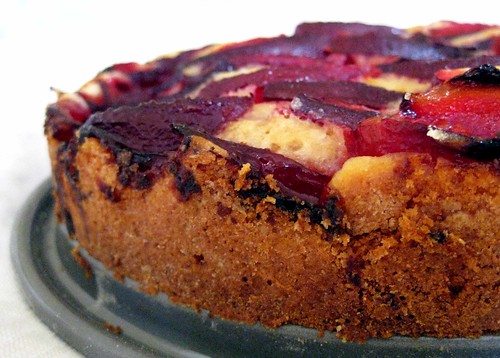Sometimes, I have no idea what I want to be when I grow up. No, scratch that. It’s that I have too many ideas, I think.
For a while – the entire first decade of my life, in fact – these many ideas at least had the courtesy to take turns. I was a serial monogamist, wedded heart and soul to one career at a time. In preschool, it was carpentry. My grandparents owned a lumber yard, so my early exposure to sky-high stacks of two-by-fours and plywood may have had something to do with it. I carried around a block of wood and a square of sandpaper in the pocket of the carpenter’s apron that my grandfather had given me. Wherever I went, I sanded. I had big plans: One day, I would build a sprawling house where I would live together with my parents, siblings, grandparents, aunts, uncles, and cousins.

We would have our own separate wings, and bunk beds, and – get this – every morning a train would loop around to each of our bedrooms and carry us down to Grand Central Station (the kitchen, of course) for breakfast. The carpentry years are well-documented in a caricature that still hangs on the wall of my childhood bedroom. In it, a five-year-old me sits happily sawing away at a sawhorse (because what else does one do at a sawhorse?), with several nails pressed between my lips. That last part always struck me as kind of dangerous, but, well, a carpenter’s got to do what a carpenter’s got to do. On Career Day, I would tie on my carpenter’s apron, tuck a T-square under my arm, and silently pity the mini-lawyers and businessmen who, as far as I could tell, had only suits, slicked back hair, and squeaky shoes to look forward to in adulthood. Not me. I was going to be a carpenter, and that drawing proved it. Its black plastic frame sealed my fate.
Until the second grade, that is, when I discovered a higher calling: veterinary medicine. I had a very specialized practice in mind. I would treat dogs and, in a nod to Roy and Innis, the Polish Arabians who lived in the stables across the street, horses. This veterinary phase lasted until the summer before the fourth grade, when I learned from a camp counselor of mine (he had been a psychology major in college) that psychology is what you study if you want to learn about the way people think and feel. Who wouldn’t want to know about that? Psychology, I decided, would be my life’s work.
But then came the fifth grade, and with it, the unsettling realization that there sure is a lot out there to be when one grows up. I read a book by Jane Goodall, and decided that I, too, wanted to study chimpanzees in their natural habitat. And my life would not be complete without a simultaneous career in musical theatre. (Painful and harmonically redundant as it sounds, I was going through an Andrew Lloyd Webber phase at the time.) Fifth grade was also the year of the poetry circle in Mrs. Barron’s English class and, to top it all off, the year that I discovered that holiest of tomes, The Thesaurus. It dawned on me like the blazing, incandescent sun: I would be a poet. One that would force her readers to dodge flowery adjectives like rapid-fire bullets, apparently. Oh, and a psychologist. Yes, still. I had far from abandoned that path. Laugh if you wish, dear readers, but I was dead serious. About all of it.
In the thick of this primate-pondering, show-tune belting, thesaurus-thumbing, and head-shrinking, I met a girl named Rachel. Rachel’s father was a produce man. To this day, I’m not certain exactly what that meant, whether he delivered the produce to the markets or arranged it on the shelves, or both. What I do know is that Rachel had a special claim to fame. At lunchtime, on a fairly regular basis, she would dump her brown bag lunch onto the table, and smugly announce: “I have never eaten a plum that is yellow on the inside.” I watched closely - we all did - and this daughter of a produce man spoke the truth. Every plum that ever crossed her lips was clearly blushing, inside and out. Of course, some plum varieties, at their ripest and most flavorful, are actually supposed to be creamy yellow beneath the skin. But we didn’t know that, and we didn’t care. To us, Rachel’s rosy plums were the plums to beat.
My curiosity about Rachel’s father’s career never blossomed into a full-fledged desire to work in produce. I did, however, entertain fantasies of the fruit that could be mine if ever I were to follow that path. The perfect plum often eludes me. It’s hit or miss. But if I were a produce professional, I would have it all down to a science. Or maybe a feeling, a stone fruit intuition, that would guide my hand to the sweetest, juiciest plums of all.
As it stands, I’m a mere layperson in the produce aisles. I never acquired any such plum-picking powers. Instead, I made the acquaintance of a certain plum-like fruit that is consistently more hit than miss: the pluot (rhymes with “flu shot”). The pluot, not to be confused with the plumcot or the aprium, is about three-fifths plum and two-fifths apricot in parentage. Deep purple, reliably sweet, with a tart, grapey finish, the pluot has officially joined the ranks of my favorite late-summer stone fruits. As its name reflects, this little fruit refuses to be just one thing. And you know, I think I might follow suit. There’s no better life than the cross-pollinated life. That may be my new mantra.
I enjoy pluots right out of hand, yes, but most of all, I like baking them into all manner of crusty, custardy, crumbly things, like galettes, clafoutis and, most recently, this simple cake.

I first tried this recipe with raspberries, and then with blackberries, but my favorite topping by far is the pluot. I think it has something to do with the way they caramelize around the edges. A slice of this cake has it all: a moist crumb, a whisper of lemon, and the sweet nuttiness that fruit takes on when it melts and curls up into itself under an open flame. It’s good company on late nights spent dreaming, scheming, and figuring things out. And even better for taking a break from all that, and simply digging in.
Pluot Cake
Adapted from Everybody Likes Sandwiches, who adapted it from Not Derby Pie
1 c. flour
1 t. baking powder
Zest of 1 lemon
¾ c. sugar
2 eggs
½ c. canola oil
1 t. vanilla
4-5 pluots, or other small stone fruit (or 1-2 c. berries)
1 T. raw sugar
Preheat the oven to 350 degrees. Butter (or oil) and flour an 8-9 inch springform pan, and slice the fruit into thin crescents. In a large bowl, mix the flour, baking powder, and lemon zest. Add the sugar, eggs, vanilla, and oil, and stir until the mixture forms a thick batter. Pour and scrape the batter into the prepared pan. As I said, it will be thick, so you may need to use a spatula to spread the batter evenly. Arrange the fruit slices on top in any pattern that pleases you. I like to go with overlapping rows on this cake. Sprinkle the top with the raw sugar, and bake for 50-60 minutes, until a cake tester inserted into the center of the cake comes out clean.
Do not overbake. I beg you. Just a couple of extra minutes rob this cake of its moisture, so check early and often. I have found that this cake is at its best on the second day. I like to bake it, let it cool, cover with plastic wrap, and keep it overnight on the counter. With this treatment, the moist crumb turns almost creamy. If you feel the need, you can slip the day-old cake under the broiler for a minute, or use a kitchen torch to re-crisp the top.
